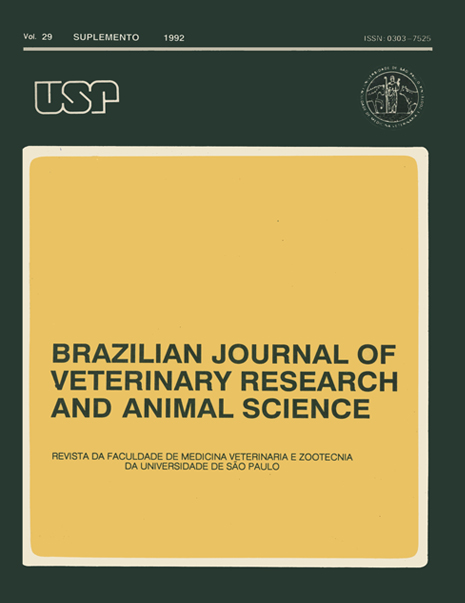A comparative study of lesions caused by different parasitic stages of Boophilus Microplus (Canestrini) in the skins of naturally infested taurine and zebuine hosts. The correlation of tick resistence with mast cell counts in the host's skin
DOI:
https://doi.org/10.11606/issn.1678-4456.bjvras.1992.52006Keywords:
Pele (doenças), Boophilus, Mastócitos, Bovinos, ZebuAbstract
Biopsies of skin injuries caused by larvae, nymphs, unengorged and engorged females of Boophilus microplus were collected from five Bos taurus and five Bos indicus steers, which had been bom on the same ranch, aged about 23 months and had been grazing together in the same pasture during the preceding 90 days. Their susceptibilities to the tick had been previously estimated, being the taurine animals around fifteen times as susceptible as the zebuine ones. The biopsies were made in such a manner that the mouth pieces were in the center of the skin fragments. These were immersed for 24 hours in 10% formalin, then processed through usual histopathological techniques and stained either by the haematoxilin-eosin or by Masson’s “trichromic” procedures. No morphological differences were found capable of explaining the higher tick susceptibility observed for the taurine hosts as compared to the zebuine’s. Biopsies from non parasitized skin from the groin region of five B. taurus and five B. indicus steers were fixed in 1% lead subacetate, plus 50% ethanol, plus 1% acetic acid, for 24 hours, which they were histologically processed and stained in 0.1 % toluidin blue. The mast cells were comparatively counted in 80 microscope fields per sample with 100 diameters of magnification and the counts averaged more than twice as high in the zebuine than in the taurine host’s skins. These results strongly suggest that mast cells participate as important elements in the bovine host’s resistance to the cattle tick.
Downloads
Downloads
Published
Issue
Section
License
The journal content is authorized under the Creative Commons BY-NC-SA license (summary of the license: https://





